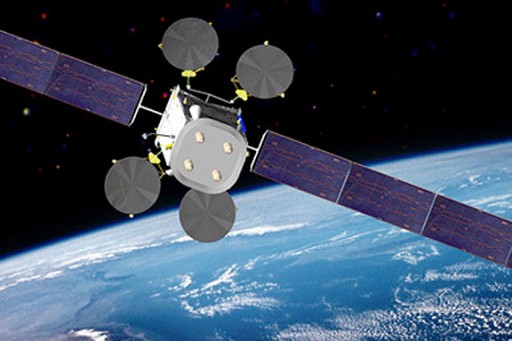Intelsat 27

The Intelsat 27 satellite was built by Boeing and will be operated by Intelsat of Luxembourg. The spacecraft is based on Boeing’s BSS-702MP Satellite Platform that is capable of hosting powerful communication payloads. It is equipped with two large deployable solar arrays featuring four panels of triple-junction Gallium Arsenide Solar Cells, and onboard batteries to provide power to its systems and the payload. Expected End-Of-Life Power is 11.8 kilowatts.
The satellite is three-axis-stabilized and features its own bi-propellant propulsion system that is used once in orbit to boost the satellite into its position in Geostationary Orbit. The system is also used for stationkeeping to stay in its operational position in orbit. Intelsat 27 is equipped with a Liquid Apogee Engine and satellite has a reaction control system consisting of four 22-Newton axial thrusters and eight 4-Newton North/South Jets. In its deployed configuration, IS-27 is 6.9 by 9.25 by 36.85 meters in size with a liftoff mass of 6,203 Kilograms.
Intelsat and Boeing Space and Intelligence Systems along with the US government have reached an agreement to host a UHF Payload for US government use on the satellite. To mitigate a shortfall in UHF capability, more and more commercial satellites host government payloads. The UHF Payload of Intelsat 27 complements that of existing UFO (UHF Follow On) and new MUOS (Multi-User Objective System) satellites. The IS-27 UHF payload is digitally tunable and operable with existing ground infrastructure and terminals. The UHF Payload consists of a total of 20 transponders.
The commercial payload that is installed on Intelsat 27 consists of Ku-Band and C-Band transponders. Sixteen 36MHz and four 72MHz C-Band transponders are installed on the satellite and the Ku payload features transponders combining channels at 27, 36, 54, 72 and 77MHz. The commercial portion of the satellite will provide communication to media and network customers in North- and South America as well as Europe. Intelsat 27 will be stationed at 304.5 degrees East in Geostationary Transfer Orbit from where it will operate for at least 15 years, replacing the Intelsat 805 satellite.
